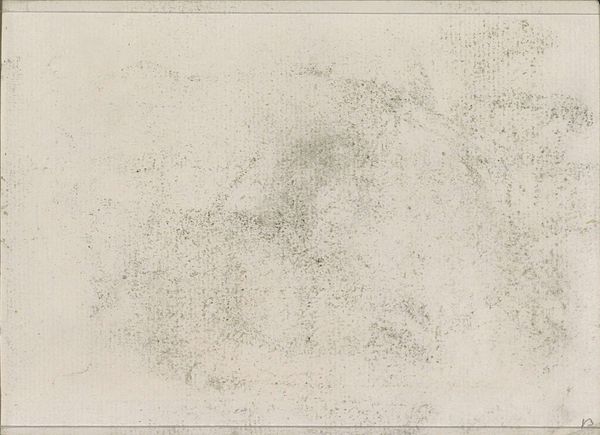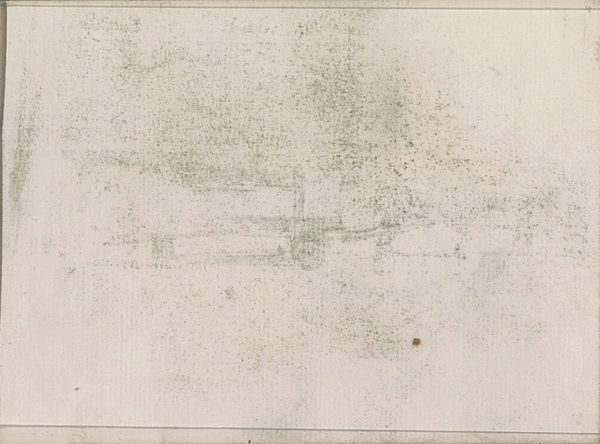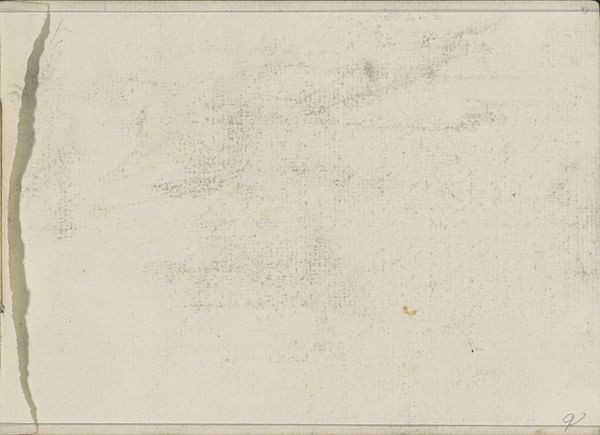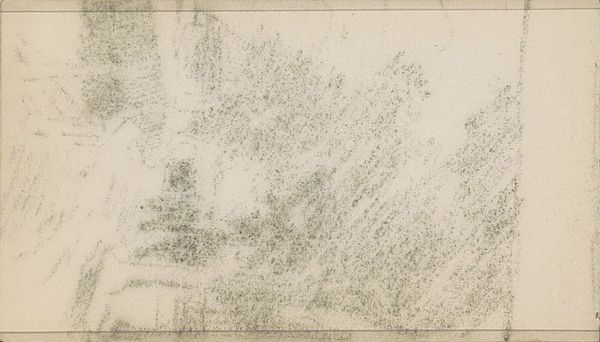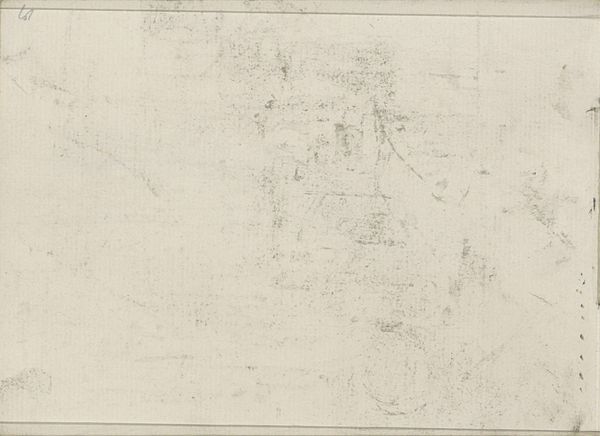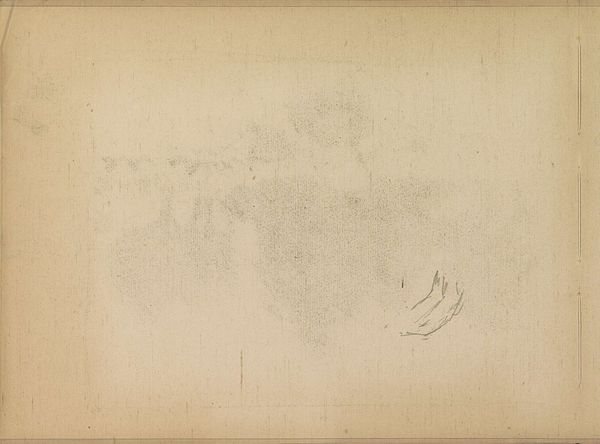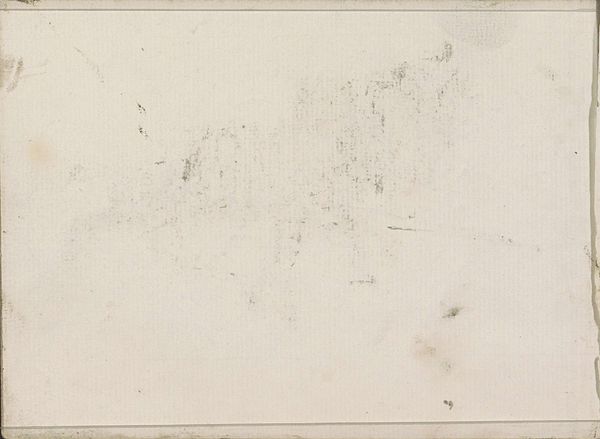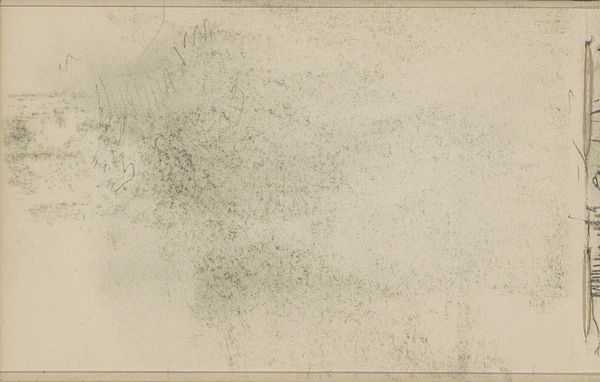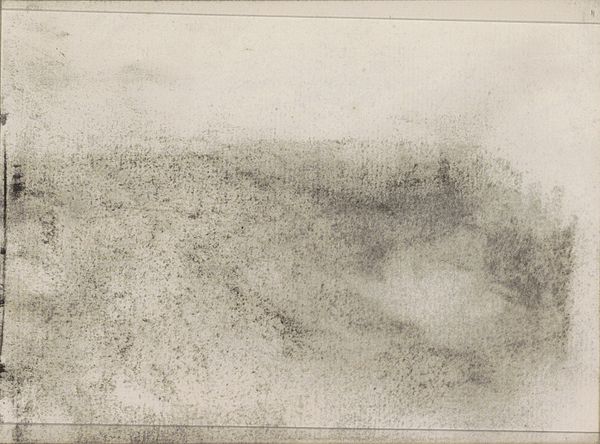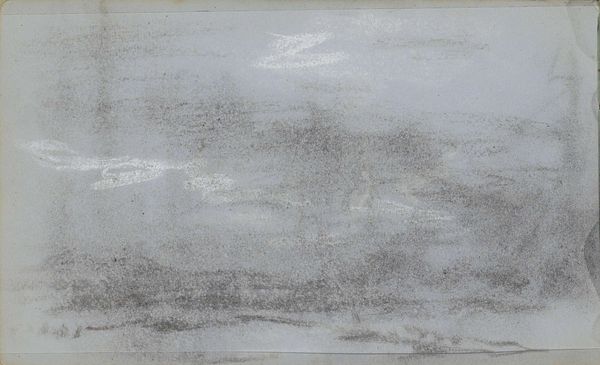
drawing, paper, pencil, graphite
drawing
pencil sketch
landscape
paper
pencil
graphite
Copyright: Rijks Museum: Open Domain
Curator: My initial impression is of mist, or perhaps a landscape emerging from a dream. It has a rather fragile, ephemeral quality. Editor: It is indeed an intriguing sketch, now hanging here at the Rijksmuseum. It's entitled "Abklatsch van de krijttekening op pagina 60", which translates roughly to 'Impression of the chalk drawing on page 60.' The artist is Isaac Israels, and the piece was made sometime between 1875 and 1934 using graphite and pencil on paper. It really speaks to the artist's capacity to use minimal elements to suggest something more substantial. Curator: I agree. The use of pencil really lends itself to this idea of something emerging, half-formed, perhaps hinting at something larger beyond the visible. But I'm curious why it's titled as an "impression." Was Israels deliberately going for a sense of impermanence? Editor: Well, “Abklatsch,” in German, refers to the process of transferring an image. That, paired with the rather utilitarian naming convention, does imply a kind of artistic detachment, wouldn't you say? It's a copy, not a definitive statement, but almost a record of a fleeting moment captured. Consider too that Israels was working in an era obsessed with capturing subjective experiences. So that could feed into his overall symbolic exploration of that momentariness. Curator: That adds a completely different layer for me, like he is commenting on how reality is just an impression, not fixed and solid but a memory of light and shadows. Thinking of light – it is all soft edges, blending shadows...a starkly reduced landscape. This work's reliance on very soft grey is a lesson for modern eyes that expect everything sharp and vivid. Editor: Absolutely. Gray, especially in art, often symbolizes neutrality, ambiguity, transition, or mourning even. So this palette serves both aesthetic and symbolic functions. The absence of strong colours or well-defined forms really allows our own minds to project possibilities onto the scene. It taps into this core concept that a landscape isn't merely what's visually present but the feeling and emotional experience one brings to that place. Curator: Right. That incompleteness is precisely where the beauty lies; it is up to the observer to give this landscape definition and breath. A quiet but active process. Editor: Indeed. So in its unfinished essence, this seemingly minor study sparks contemplation on ephemerality, the psychology of landscapes, and the ever-shifting sands of our perception.
Comments
No comments
Be the first to comment and join the conversation on the ultimate creative platform.

